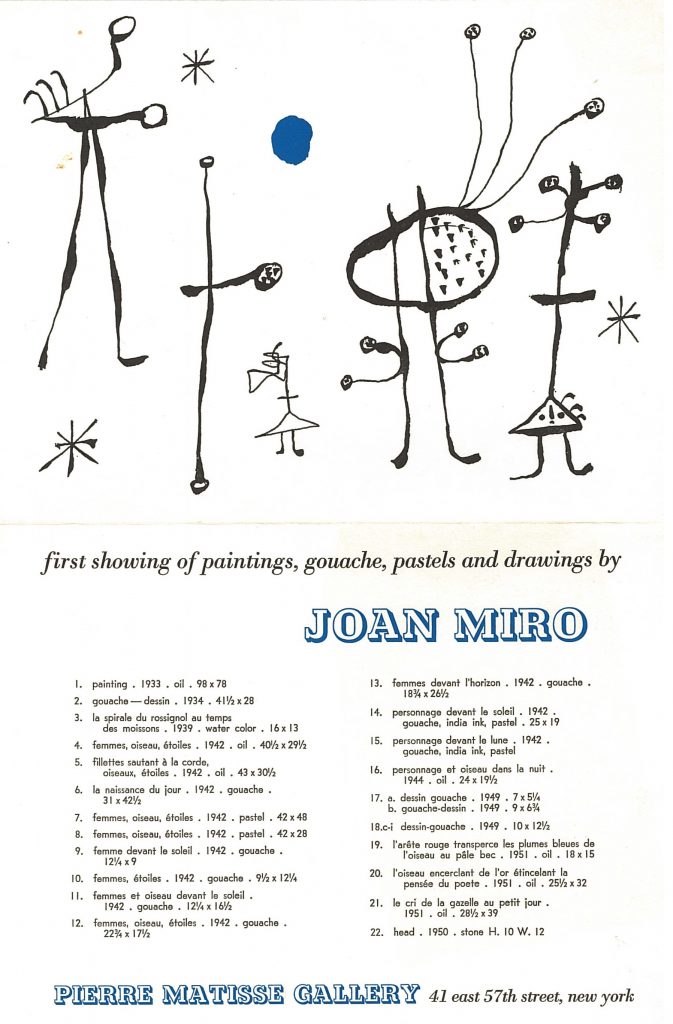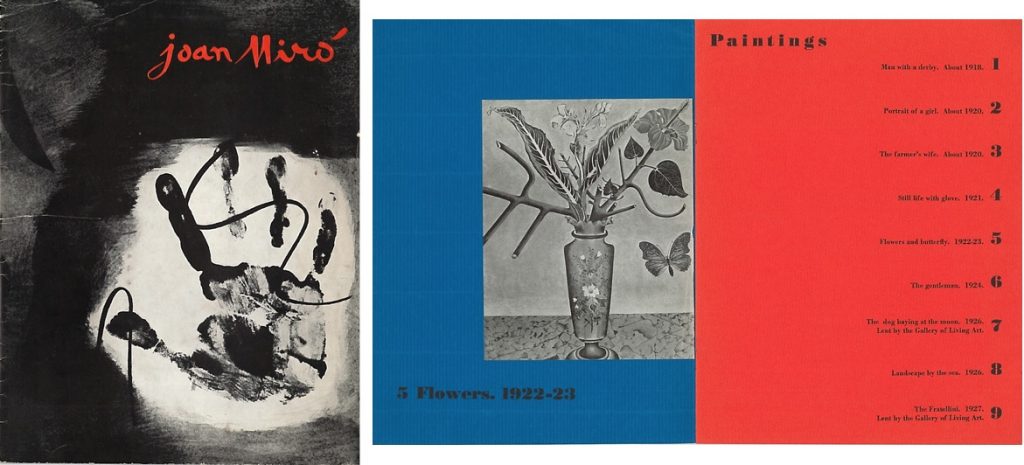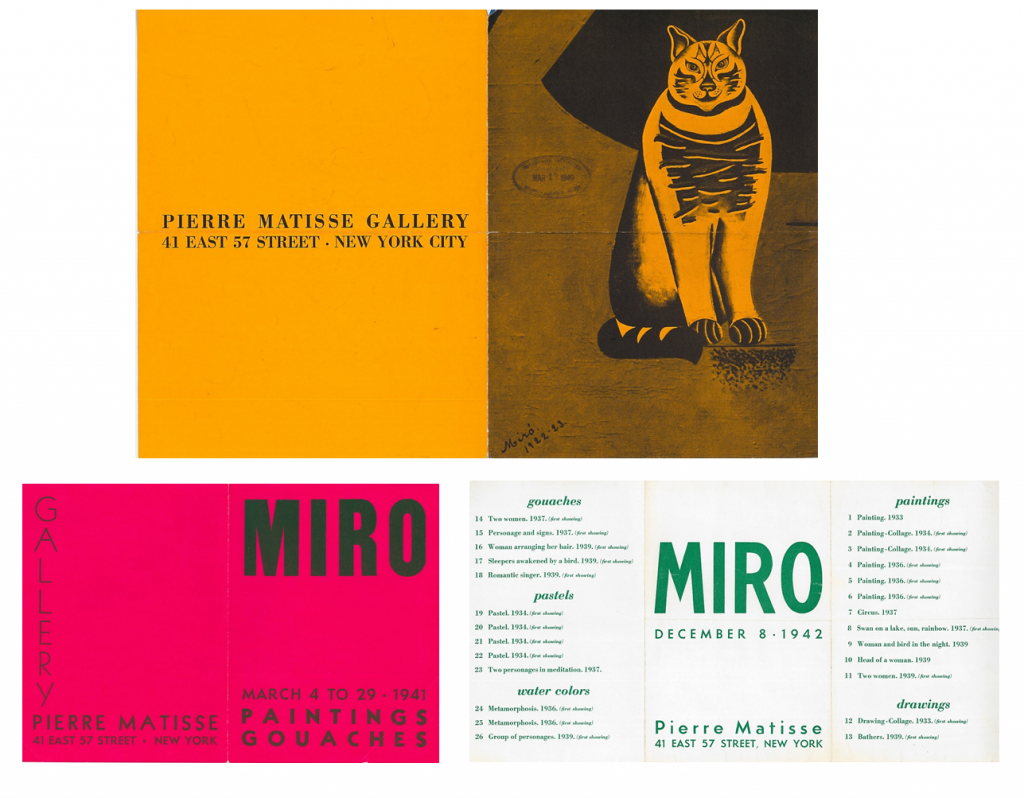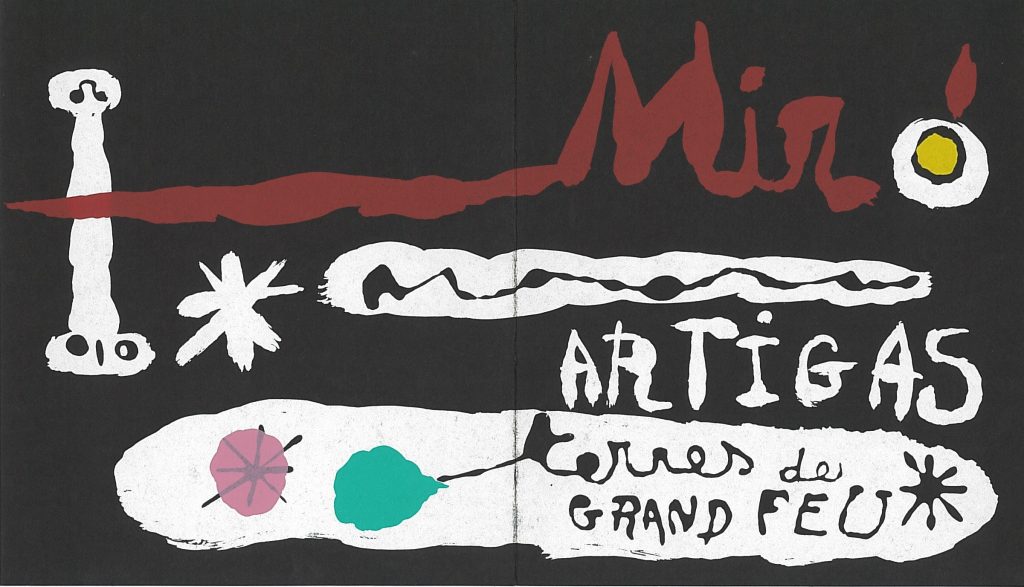If you think of Jean Dubuffet, Yves Tanguy, Balthus, Alberto Giacometti, Marc Chagall, and Joan Miró, you may instantly think of some of the most famous canvases and sculptures of modern art. These artists have been immortalized in art history as key figures within Modernism, a position made even more apparent by their countless works housed in some of the most important museums around the world. A name less recognizable is that of Pierre Matisse, the art dealer and gallerist who represented each of the artists mentioned above at various moments throughout his 50-plus year career. Without his influence and his financial, creative and personal support, it could be argued that these artists would not be remembered or celebrated in the same way that they currently are. Matisse, the son of one of the most influential artists of the 20th century, Henri Matisse, established his eponymous gallery on the Upper East Side in New York in 1931 and it stayed open until his death in 1989. He was incredibly well-respected within his field and known for his impeccable eye and his unflinching drive to develop young artists, promote their work, and ensure their success.
Going through the Art and Artist Files at the Hirshhorn Museum and Sculpture Gallery Library and the American Art/ Portrait Gallery Library, it became clear to me just how important Pierre Matisse was to the career of Miró. The majority of the files were made up of invitations, catalogues, postcards, press releases that spanned from the 1930s-1980s from the Pierre Matisse Gallery promoting Miró’s work and his exhibitions. I was even able to find the catalogue from the artist’s first show at Matisse’s gallery in 1932, which included a checklist of the paintings exhibited, and an invitation to the artist’s second to last exhibition with Matisse in 1985. It turns out that Matisse exhibited Miro’s work more than any other artist he represented with a total of 37 exhibitions devoted to Miró’s paintings, drawings and sculptures. Compare that to the seven shows Matisse organized for Balthus, 16 for Chagall, 12 for Dubuffet, five for Giacometti, and seven for Tanguy.

Interestingly enough, originally Matisse wasn’t so fond of Miró’s work. In an interview with Rosamond Bernier, art writer and founder of L’OEIL magazine, he is quoted saying “I just didn’t get it,” after his gallerist and art dealer friend, Pierre Loeb, gave him the 1927 Miró work titled Painting. After some time, however, Matisse gave the painting a second look and from then on was hooked: “It was a composition that had a precision all its own. There were no empty words. Miró wanted to do the maximum and the minimum. I didn’t need to know what it was about. It was a revelation. Life was bursting out everywhere.”


On the 1st of November 1932, Miro’s first show at the Pierre Matisse Gallery opened and by 1934 Miro granted Matisse exclusive rights to sell his art in North America. In the beginning these sales were not easy since Miro’s artwork seemed to confuse the American public. E.A. Jewell of The New York Times wrote, “[Miro’s] curious art sails quite above the head of the present reviewer. The titles are plain as the nose on your face, but if you can find relationship between them and the designs to which they are appended, you may consider yourself warmly congratulated by this department.” Miro himself was completely conscious of this challenge. In a letter that he wrote to Pierre in 1934, he admits, “I am well aware that it is not easy to handle my paintings. It calls for almost as much courage as it does for me to paint them.” However, by the 1940s it seemed that Matisse’s investment and interest in the artist was validated as the art world, collectors and the public began to embrace Miro’s unique vision and experimentation. This partnership would continue until the artist’s death in 1983 and Matisse continued to exhibit and represent Miro until his death and the close of his gallery.

Source:
William Griswold. Pierre Matisse and his Artists. New York : Pierpont Morgan Library, 2001.

Be First to Comment